HSBC 2002 Annual Report Download - page 313
Download and view the complete annual report
Please find page 313 of the 2002 HSBC annual report below. You can navigate through the pages in the report by either clicking on the pages listed below, or by using the keyword search tool below to find specific information within the annual report.-
 1
1 -
 2
2 -
 3
3 -
 4
4 -
 5
5 -
 6
6 -
 7
7 -
 8
8 -
 9
9 -
 10
10 -
 11
11 -
 12
12 -
 13
13 -
 14
14 -
 15
15 -
 16
16 -
 17
17 -
 18
18 -
 19
19 -
 20
20 -
 21
21 -
 22
22 -
 23
23 -
 24
24 -
 25
25 -
 26
26 -
 27
27 -
 28
28 -
 29
29 -
 30
30 -
 31
31 -
 32
32 -
 33
33 -
 34
34 -
 35
35 -
 36
36 -
 37
37 -
 38
38 -
 39
39 -
 40
40 -
 41
41 -
 42
42 -
 43
43 -
 44
44 -
 45
45 -
 46
46 -
 47
47 -
 48
48 -
 49
49 -
 50
50 -
 51
51 -
 52
52 -
 53
53 -
 54
54 -
 55
55 -
 56
56 -
 57
57 -
 58
58 -
 59
59 -
 60
60 -
 61
61 -
 62
62 -
 63
63 -
 64
64 -
 65
65 -
 66
66 -
 67
67 -
 68
68 -
 69
69 -
 70
70 -
 71
71 -
 72
72 -
 73
73 -
 74
74 -
 75
75 -
 76
76 -
 77
77 -
 78
78 -
 79
79 -
 80
80 -
 81
81 -
 82
82 -
 83
83 -
 84
84 -
 85
85 -
 86
86 -
 87
87 -
 88
88 -
 89
89 -
 90
90 -
 91
91 -
 92
92 -
 93
93 -
 94
94 -
 95
95 -
 96
96 -
 97
97 -
 98
98 -
 99
99 -
 100
100 -
 101
101 -
 102
102 -
 103
103 -
 104
104 -
 105
105 -
 106
106 -
 107
107 -
 108
108 -
 109
109 -
 110
110 -
 111
111 -
 112
112 -
 113
113 -
 114
114 -
 115
115 -
 116
116 -
 117
117 -
 118
118 -
 119
119 -
 120
120 -
 121
121 -
 122
122 -
 123
123 -
 124
124 -
 125
125 -
 126
126 -
 127
127 -
 128
128 -
 129
129 -
 130
130 -
 131
131 -
 132
132 -
 133
133 -
 134
134 -
 135
135 -
 136
136 -
 137
137 -
 138
138 -
 139
139 -
 140
140 -
 141
141 -
 142
142 -
 143
143 -
 144
144 -
 145
145 -
 146
146 -
 147
147 -
 148
148 -
 149
149 -
 150
150 -
 151
151 -
 152
152 -
 153
153 -
 154
154 -
 155
155 -
 156
156 -
 157
157 -
 158
158 -
 159
159 -
 160
160 -
 161
161 -
 162
162 -
 163
163 -
 164
164 -
 165
165 -
 166
166 -
 167
167 -
 168
168 -
 169
169 -
 170
170 -
 171
171 -
 172
172 -
 173
173 -
 174
174 -
 175
175 -
 176
176 -
 177
177 -
 178
178 -
 179
179 -
 180
180 -
 181
181 -
 182
182 -
 183
183 -
 184
184 -
 185
185 -
 186
186 -
 187
187 -
 188
188 -
 189
189 -
 190
190 -
 191
191 -
 192
192 -
 193
193 -
 194
194 -
 195
195 -
 196
196 -
 197
197 -
 198
198 -
 199
199 -
 200
200 -
 201
201 -
 202
202 -
 203
203 -
 204
204 -
 205
205 -
 206
206 -
 207
207 -
 208
208 -
 209
209 -
 210
210 -
 211
211 -
 212
212 -
 213
213 -
 214
214 -
 215
215 -
 216
216 -
 217
217 -
 218
218 -
 219
219 -
 220
220 -
 221
221 -
 222
222 -
 223
223 -
 224
224 -
 225
225 -
 226
226 -
 227
227 -
 228
228 -
 229
229 -
 230
230 -
 231
231 -
 232
232 -
 233
233 -
 234
234 -
 235
235 -
 236
236 -
 237
237 -
 238
238 -
 239
239 -
 240
240 -
 241
241 -
 242
242 -
 243
243 -
 244
244 -
 245
245 -
 246
246 -
 247
247 -
 248
248 -
 249
249 -
 250
250 -
 251
251 -
 252
252 -
 253
253 -
 254
254 -
 255
255 -
 256
256 -
 257
257 -
 258
258 -
 259
259 -
 260
260 -
 261
261 -
 262
262 -
 263
263 -
 264
264 -
 265
265 -
 266
266 -
 267
267 -
 268
268 -
 269
269 -
 270
270 -
 271
271 -
 272
272 -
 273
273 -
 274
274 -
 275
275 -
 276
276 -
 277
277 -
 278
278 -
 279
279 -
 280
280 -
 281
281 -
 282
282 -
 283
283 -
 284
284 -
 285
285 -
 286
286 -
 287
287 -
 288
288 -
 289
289 -
 290
290 -
 291
291 -
 292
292 -
 293
293 -
 294
294 -
 295
295 -
 296
296 -
 297
297 -
 298
298 -
 299
299 -
 300
300 -
 301
301 -
 302
302 -
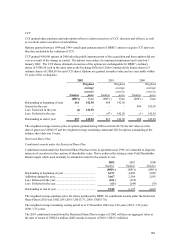 303
303 -
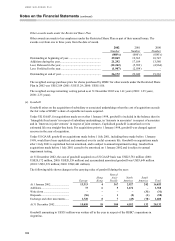 304
304 -
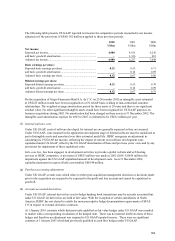 305
305 -
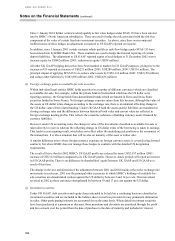 306
306 -
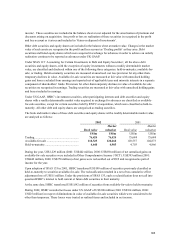 307
307 -
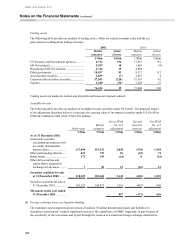 308
308 -
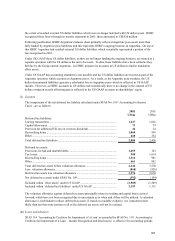 309
309 -
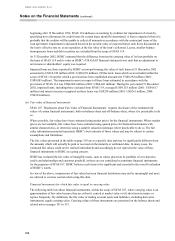 310
310 -
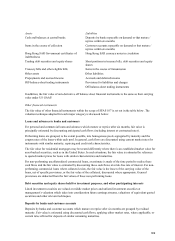 311
311 -
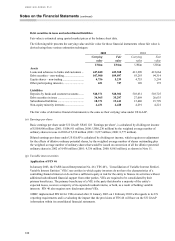 312
312 -
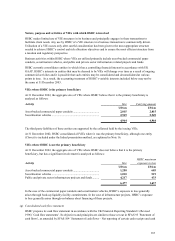 313
313 -
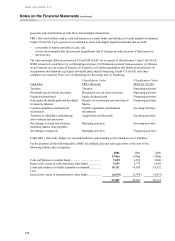 314
314 -
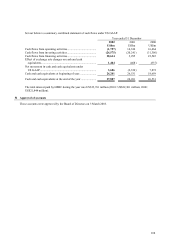 315
315 -
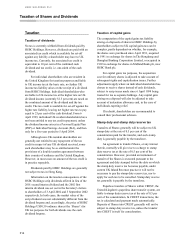 316
316 -
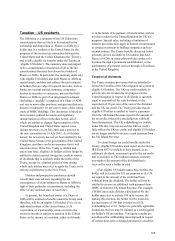 317
317 -
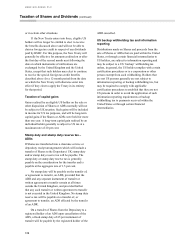 318
318 -
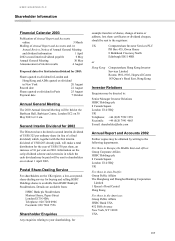 319
319 -
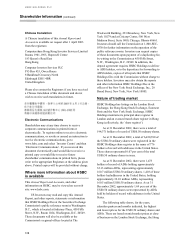 320
320 -
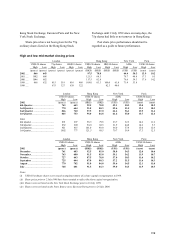 321
321 -
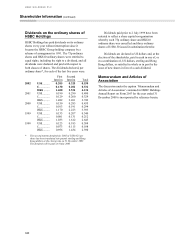 322
322 -
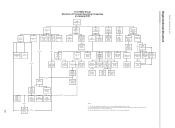 323
323 -
 324
324 -
 325
325 -
 326
326 -
 327
327 -
 328
328 -
 329
329
 |
 |

311
Nature, purpose and activities of VIEs with which HSBC is involved
HSBC makes limited use of VIE structures in its business and principally engages in these transactions to
facilitate client needs. Any use by HSBC of a VIE structure in a business transaction is commercially driven.
Utilisation of a VIE occurs only after careful consideration has been given to the most appropriate structure
needed to achieve HSBC’ s control and risk allocation objectives and to ensure the most efficient structure from
a taxation and regulatory perspective.
Business activities within HSBC where VIEs are utilised primarily include asset-backed commercial paper
conduits, securitisation vehicles, and public and private sector infrastructure related projects and funds.
HSBC currently consolidates entities in which it has a controlling financial interest in accordance with UK
GAAP. HSBC’ s interests in entities that may be deemed to be VIEs will change over time as a result of ongoing
commercial activities and it is possible that such entities may be consolidated and deconsolidated at various
points in time. As a result, the accounting treatment of HSBC’ s variable interests included below may not be
the same at 31 December 2003.
VIEs where HSBC is the primary beneficiary
At 31 December 2002, the aggregate size of VIEs where HSBC believe that it is the primary beneficiary is
analysed as follows:
Activity Size Carrying amoun
t
US$ m US$ m
Asset-backed commercial paper conduits.................................... 2,015 2,015
Securitisation vehicles ................................................................. 2,949 2,949
4,964 4,964
The third party liabilities of these entities are supported by the collateral held by the issuing VIEs.
At 31 December 2002, HSBC consolidated all VIEs where it was the primary beneficiary, although one entity
(Clover) is included under the linked presentation method, as explained in Note 16.
VIEs where HSBC is not the primary beneficiary
At 31 December 2002, the aggregate size of VIEs where HSBC does not believe that it is the primary
beneficiary, but has a significant involvement is analysed as follows:
Activity Size HSBC maximum
exposure to loss
US$ m US$ m
Asset-backed commercial paper conduits.................................... 1,250 685
Securitisation vehicles ................................................................. 1,010 519
Public and private sector infrastructure projects and funds.......... 4,217 433
6,477 1,637
In the case of the commercial paper conduits and securitisation vehicles, HSBC’ s exposure to loss generally
arises through back-up liquidity facility commitments. In the case of infrastructure projects, HSBC’ s exposure
to loss generally arises through on-balance sheet financing of these projects.
(q) Consolidated cash flow statement
HSBC prepares its cash flow statement in accordance with the UK Financial Reporting Standard 1 (Revised
1996) ‘Cash flow statements’ . Its objectives and principles are similar to those set out in SFAS 95 ‘Statement of
cash flows’ , as amended by SFAS 104 ‘Statement of cash flows – Net reporting of certain cash receipts and cash
